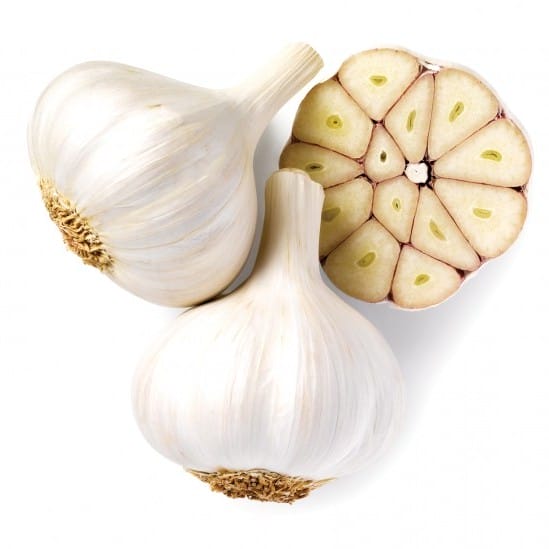German White Garlic is more than just a flavorful addition to your meals; it’s a powerhouse of health benefits and a gardener’s delight. This article explores the unique qualities of German White Garlic seed, its health benefits, planting and care tips, harvesting techniques, delicious recipes, and ways to preserve its flavor. Whether you’re an experienced gardener or a culinary enthusiast, you’ll find valuable information to help you embrace this wonderful ingredient.
The Unique Qualities of German White Garlic
What Makes German White Garlic Special?
German White Garlic, known as Allium sativum, is a hardneck variety celebrated for its bold flavor and health benefits. Unlike softneck varieties, German White Garlic offers a distinctive taste that many chefs prefer. Its large, white cloves are easy to peel and add richness to various dishes.
This variety thrives in cooler climates, making it a popular choice among gardeners in northern regions. Moreover, German White Garlic is high in allicin, a compound linked to its many health benefits, including antimicrobial and antioxidant properties. According to a study published in the Journal of Nutrition, allicin has been shown to have significant health benefits, including reducing cholesterol levels and lowering blood pressure.
Ideal Growing Conditions
When growing German White Garlic, it’s crucial to provide the right conditions for optimal growth. This variety flourishes in well-drained, loamy soil with a pH level between 6.0 and 7.0. Full sun exposure is essential; choose a planting site that receives at least 6 hours of sunlight daily.
German White Garlic prefers cooler temperatures during the growing season. The ideal planting time is in the fall, about 4-6 weeks before the ground freezes, allowing the bulbs to establish roots before winter. In warmer climates, you can also plant it in early spring. Having grown German White Garlic in my own garden for several years, I can attest to its resilience and the satisfaction it brings when harvested.

Health Benefits of German White Garlic
Nutritional Profile
German White Garlic is not just a culinary delight; it’s packed with essential nutrients. A single clove contains vitamins C and B6, manganese, calcium, iron, and antioxidants. These nutrients support overall health and well-being.
Antioxidant Properties
One standout benefit of German White Garlic is its high antioxidant content. Antioxidants combat oxidative stress in the body, reducing the risk of chronic diseases such as heart disease, diabetes, and cancer. Allicin in garlic has potent antioxidant effects, making it an excellent addition to a healthy diet. Research published in the American Journal of Clinical Nutrition highlights the importance of antioxidants in preventing chronic diseases (source).
Immune System Booster
Incorporating German White Garlic into your diet can boost your immune system. Studies show garlic enhances immune function and may help reduce the severity and duration of colds and flu. By growing your own German White Garlic, you can easily add this beneficial ingredient to your meals whenever you need a health boost.
Cardiovascular Health
Regular consumption of German White Garlic links to improved cardiovascular health. Garlic helps lower blood pressure, reduce cholesterol levels, and improve circulation. These factors contribute to a healthier heart and a decreased risk of heart-related diseases. It’s essential to consult with a healthcare professional if you have a history of blood disorders or are on blood-thinning medications, as garlic can enhance the effects of these medications.
Anti-inflammatory Benefits
German White Garlic possesses anti-inflammatory properties, which help alleviate symptoms of conditions like arthritis and other chronic inflammatory diseases. Adding garlic to your diet may reduce inflammation and support overall joint health. However, individuals with allergies to garlic should avoid its consumption to prevent adverse reactions.
Planting and Caring for German White Garlic
Step 1: Choosing the Right Seeds
When selecting German White Garlic seeds, choose high-quality bulbs from a reputable source. Look for firm, plump bulbs without signs of mold or damage. You can find German White Garlic seeds at local nurseries or online gardening stores.
Step 2: Preparing the Soil
Before planting, prepare the soil by removing weeds, rocks, and debris. Loosen the soil to a depth of at least 12 inches and mix in compost or well-rotted manure to enhance soil fertility and drainage. A well-prepared bed provides your garlic with the nutrients it needs to thrive.
Step 3: Planting the Cloves
Plant garlic cloves in the fall, about 2 inches deep and 6 inches apart, with the pointed end facing upward. If you plant in the spring, ensure that the soil temperature is consistently above 50°F. After planting, cover the cloves with soil and water them lightly.
Step 4: Watering and Fertilizing
German White Garlic requires consistent moisture, especially during the growing season. Water your garlic regularly to keep the soil evenly moist, but avoid overwatering to prevent rot. Fertilize with a balanced fertilizer or compost in early spring, following the manufacturer’s instructions.
Step 5: Mulching
Applying a layer of mulch around your garlic plants helps retain moisture, suppress weeds, and regulate soil temperature. Use straw, grass clippings, or shredded leaves as mulch, ensuring it’s not too thick to allow water to reach the roots.
Step 6: Pest and Disease Control
Watch for common pests like aphids and thrips. Use organic pest control methods, such as insecticidal soap or neem oil, to manage infestations. Additionally, practice crop rotation and avoid planting garlic in the same spot each year to reduce the risk of soil-borne diseases. I have found that rotating garlic with other crops, such as tomatoes, helps maintain soil health and reduce pest issues.
Harvesting German White Garlic
When to Harvest
Timing is crucial when harvesting German White Garlic. Typically, garlic is ready to harvest in mid to late summer, around late June to early August, depending on your growing zone. Look for signs such as yellowing leaves and browning lower leaves, indicating that the bulbs are mature.
How to Harvest
To harvest your German White Garlic, gently loosen the soil around the bulbs using a garden fork or spade, taking care not to damage them. Grasp the stalk firmly and pull the bulbs out of the ground. If the soil is dry or hard, water it a day before harvesting to facilitate the process.
Curing the Garlic
After harvesting, cure the garlic to enhance its flavor and extend its shelf life. Place the bulbs in a cool, dark, and dry area with good airflow for about 2-3 weeks. Once the outer skin is dry and papery, trim the roots and cut the stalks, leaving about an inch of stem attached for aesthetic purposes.
| Aspect | Details |
| Seed Selection | Choose high-quality bulbs; firm, plump without mold/damage. |
| Soil Preparation | Well-drained, loamy soil; pH between 6.0 and 7.0; mix in compost. |
| Planting Depth | 2 inches deep, 6 inches apart; pointed end up. |
| Watering Needs | Keep soil consistently moist; avoid overwatering to prevent rot. |
| Mulching | Use straw or shredded leaves to retain moisture and suppress weeds. |
| Pest Control | Monitor for aphids and thrips; use organic methods like insecticidal soap. |
| Harvest Timing | Harvest from mid to late summer; look for yellowing leaves. |
| Curing Process | Cure in a cool, dark area for 2-3 weeks; trim roots and stalks after drying. |
| Cooking Uses | Can be used fresh, roasted, or in infused oils for various dishes. |
| Storage Tips | Store in a mesh bag; avoid moisture and heat for longer shelf life. |
Delicious Recipes Featuring German White Garlic
Roasted German White Garlic
One of the simplest ways to enjoy German White Garlic is by roasting it. Roasting caramelizes the garlic, enhancing its natural sweetness and flavor.
Ingredients
- 1 head of German White Garlic
- 2 tablespoons olive oil
- Salt and pepper to taste
Instructions
- Preheat your oven to 400°F (200°C).
- Slice off the top of the garlic head to expose the cloves.
- Drizzle with olive oil and season with salt and pepper.
- Wrap in aluminum foil and roast for 30-35 minutes until soft.
- Squeeze the roasted garlic out of the skins and spread it on bread, mix it into mashed potatoes, or add it to pasta dishes.
Garlic Butter Shrimp
This quick dish showcases the bold flavor of German White Garlic.
Ingredients
- 1 pound shrimp, peeled and deveined
- 4 cloves German White Garlic, minced
- 4 tablespoons butter
- 1 tablespoon parsley, chopped
- Salt and pepper to taste
Instructions
- In a skillet, melt the butter over medium heat.
- Add the minced garlic and sauté until fragrant, about 1 minute.
- Add shrimp and cook until pink, about 3-4 minutes.
- Remove from heat, season with salt and pepper, and garnish with parsley.
German White Garlic and Herb Chicken
This flavorful chicken dish is perfect for a family dinner.
Ingredients
- 4 chicken breasts
- 6 cloves German White Garlic, minced
- 2 tablespoons olive oil
- 1 tablespoon rosemary, chopped
- Salt and pepper to taste
Instructions
- Preheat your oven to 375°F (190°C).
- In a bowl, mix olive oil, garlic, rosemary, salt, and pepper.
- Coat the chicken breasts with the mixture and place them in a baking dish.
- Bake for 25-30 minutes or until the chicken is cooked through.
Preserving the Flavor of German White Garlic
Proper Storage Techniques
To preserve the flavor of German White Garlic, store it in a cool, dark, and dry place. Ideally, use a mesh bag or a basket that allows for airflow. Avoid storing garlic in plastic bags, as this can trap moisture and cause mold.
Using Garlic in Your Cooking
German White Garlic can enhance various culinary applications, from marinades and dressings to soups and sauces. Here are a few tips for using garlic effectively in your cooking:
- Minced Garlic: Use fresh minced garlic for a robust flavor in dishes like stir-fries, marinades, and salad dressings.
- Roasted Garlic: Incorporate roasted garlic into mashed potatoes, pasta, or as a spread on bread for a sweet, mellow flavor.
- Garlic Infused Oil: Create garlic-infused oil by gently heating olive oil with whole cloves of garlic. Use it for drizzling over vegetables, pasta, or as a dipping oil.
Freezing Garlic for Long-Term Use
If you have a surplus of German White Garlic, freeze it for later use. Peel the cloves and chop or mince them before placing them in an airtight container or freezer bag. You can also freeze whole heads of garlic for convenience. To use, simply remove the amount you need and let it thaw before cooking.
Featured client/products:
Glass Floors | Semi Truck Ramp | Glass Blocks| IT Companies Near Me | SEO Services Near Me | Steel Yard Ramp | Ramp for Loading Dock | Glass Flooring | Loading Dock Ramps | Portable Yard Ramp | Painters Near Me | Interior Painters Near Me



